|
I delivered a talk at the Florence Unitarian Universalist Fellowship that I hope will help people have less anxiety as we move through this transition period for all of humanity. CLICK on the image below for a link to a pdf of the slides i used. I included a short video of Donald Hoffman's explanation of how what we perceive is not real; CLICK HERE for a link to the full lecture.
I received an email the other day from yet another person really concerned about the polarization that's happening, not just in our politics (globally as well as nationally) but in our social interactions. The issue that triggered the email was the wide variation in what people consider facts, these days: "... the problem with the rampant ignorance portraying itself as knowledge is that it can not be corrected, in any way that I can see. It serves itself entirely, like Frank Herbert (or was it Robert Heinlein) said of the Angry Mind, exists only for itself. These proclamations of absurd and impossible things are very disturbing more for that reason than for what they actually say. Data without any possible corrective feedback." My response to this email, which is one of many expressing concerns about the issue was: So... how about this: the world of negative/distressing polarity is pulling further and further away from the world of positive/loving polarity, and you're just observing it. How's that for an explanation? No need to try to change it, simply to hold to the love and trust that most of the folk who can feel it will come along, while those who can't will move in into their very different world. Like the cover of the original Make the World Go Away: The higher energy planet slips away from the lower density, and there's "a new heaven in a new earth" It's
not fun to watch, though... the folks who are "stuck" in the distress are going through some pretty terrible stuff! I'm not the only one suggesting this idea, though I did so back in 2008, before it was being posted on the internet. If we accept the "multiverse" theory of reality, then universes branch off at various choice points along the way, and what was "real" in one universe is no longer even possible in another. The old one is completely forgotten almost immediately, because there's no way it could have happened, from the perspective of the new one. The New Testament book of Revelation tells us that "the old earth and the old heaven shall pass away... and a new heaven and earth shall replace them." (translations vary). This totally fits the multiverse model. In one universe Earth is separate from Heaven, but Jesus and other spiritual teachers tell us that what we call Heaven is not "someplace else", but rather right here--simply unavailable to people who are not attuned to it. This raises the question: what if the people who are not attuned to Heaven are splitting their universe away from the people who are? What if we are, in fact experiencing 2 different versions of life on Earth right now? Then, one day, will only experience one version: the one that we are attuned to? Accepting that possibility helps explain all kinds of things, including the "Left Behind" series of books and movies, the various dystopian and utopian books and movies, and the prophecies of the Judeo-Christian tradition - as well as many of the indigenous prophecies. A new Heaven in a new Earth. I'm ready for it! :) I got to go to New Zealand! It was an unexpected, but totally amazing experience: 2+ weeks in New Zealand in August! Click on the links below to see my travel journal...
It was an amazing, totally unexpected experience, and I so appreciate all the folks who made it possible! Over a 2-week period a couple students and I had the good fortune to be able to visit a number of cities and rural areas around the United Kingdom. The links below lead to the different chapters in my journey...
If you'd like to be on list to receive things like this in your emails, CLICK HERE and let me know. Thanks! May Travels 1 - Arriving in Portland Oregon & On to London May Travels 2 - Essential London & the British Museum May Travels 3 -Oxford & Brighton May Travels 4 - Great & Small in Scotland May Travels 5 - Following the Saints in Ireland
What we saw on January 6 is not who we are - but it does show us that something is really off-balance in our nation, our world, our communities - and our selves.
I've been traveling and listening and learning more and more about what's happening, which I'll be sharing in my new online class: Understanding Values & Viewpoints in American Politics. That new class begins with this:
There's lots more to it, and you can sign up for it by CLICKING HERE.
You may also be interested in the talk I taped on Friday the 8th: Recently, a copy of the famous Chief Seattle speech, "How Can You Buy or Sell the Earth?" was put in front of me. Although I've seen it many times, this time I was able to explain how it is that Americans have come to think we can buy land.
For hundreds of thousands of years, people have wandered around large areas of land, finding food as they could, often not even aware there were other people on the planet. They relied on observation and intuition to guide them from place to place, food source to food source. Anyone who could intuitively access information about what they needed was elevated in stature, as were those who could carry large loads or accurately use a spear or stone knife. As climates changed, people were pushed into smaller and smaller habitable areas and had to find new ways to live. They began to nourish certain "wild" supplies of food and manage forests and range lands, and they learned to rely on a new kind of guidance in the process - one which understood what a plant or tree needed in order to flourish, and how to maintain balance among a group of people living in close proximity. Early villages grew out of this process. Located along waterways, they were fixed and stable. Houses and gardens were built and animals were brought in to the village rather than hunted in the wilderness. Now decisions had to be made about who would live and work where - and a new kind of guidance was needed to make it work for everyone for the long term. Wise men and women were honored who could access that wisdom and persuade others to follow it. Older women, especially, who had seen life, had learned to read people's hearts, how to nourish plants and babies, and how the climate shifted and changed over the years, were honored and appreciated - as the Neolithic "Venus" figurines attest. The village gardening life thrived with few hardships and virtually no violence for several thousand years, until a new climate shift caused mass migrations into the river valleys. Apparently an asteroid hit the planet and caused much desertification. The great plains of northern Africa became the Sahara desert. Much of Central Asia dried up, and areas of the Caucasus became uninhabitable. Many people moved into the river valleys. Bringing more people into the villages was difficult, but doable, with the existing processes and systems. The land was reapportioned, forests were cut down, reeds planted to replace the fuel, food, and fiber that the trees had provided, and new villages were built where the forests had been. But along the Tigris and Euphrates and their tributaries, things happened very differently. Large blonde men, riding horses and herding large numbers of cattle, moved down from the Caucasus seeking new pastures. They had little use for gardens and let their herds trample them. In some cases, whole villages were demolished, flattened. These men had no respect for women, seeing them as a bull sees cows, and used them roughly - often stealing them and hiding them so no one could steal them back. And they were rougher, faster, and stronger than most of the valley men they encountered. By 3200 b.c.e., enough waves of Caucasians had moved into many river valleys that they had changed the culture. From the Indus to the Nile the city-state was now established. Civilization (also known as urbanization) had begun. The foundation for a new kind of culture, based on taking and expanding, was laid. Under this regime, the land belonged to the emperor-king, who, using the basic idea from the old gardening culture, that the land was sacred to the divine Power, claimed it by divine right: the Divinity (God or Goddess) had given him all the land as long as he could control it. Therefore anyone else could only use it with his permission. If he liked someone or they had done a great service for him, he would give them the right to use the land - either for their lifetime or for some or all succeeding generations. Up 'til this moment in time, no one had ever thought of "owning" a piece of land. But a mindset that says "I want it and I shall have it" was built into this new kind of leader. Taking over what others are using is normal to that way of thinking - and converting men into herds to trample over other lands (and people) was the way to do that. So armies were born, and the idea of battle. Taking control of the rich proceeds of new land was the great hunger of this new, Empire culture. From father to son the ambition was passed down: grow! expand! acquire more! This was the way of Empire culture for over four thousand years: choose a piece of land, take an army there to take it over, and then take as much of the proceeds as possible home, handing out rights to use the land to a few, select individuals. Even through the 1500s and into the 1600s European empires continued to grow by treating the whole world this way. Chinese, Russian, and Islamic empires fought back and forth across Asia, as well. But then, something new began. The emperors were actually losing wealth by fighting these battles. More and more, the proceeds from the lands were barely enough to cover the cost of acquiring them. Large armies needed supplies. Navies needed to be built and maintained. And even with all the gold and riches of Africa and the Americas, the emperors were falling behind. This was when the idea of selling land came into the picture. First, emperors sold the right to occupy land to individuals for a period of time: a “leasehold” for a period of years. Soon, in desperation, they actually sold their rights to own and occupy certain pieces of land to individuals. Land grants became a sort of payment for services – especially land in far-away places like the Americas - during those years. The next step was to grant (or sell) lands to companies. And it was this that made it possible for many to settle North America. The Puritans, for example, contracted with a company to get them to North America based on a promise that they would send back part of their produce in return for the right to live on that land. Sadly it became clear that people who haven't grown up sharing things in common don't know how to maintain commons or use only their share. The American colonists were not rural villagers with such a history, so they found another way: buy the company's interest in the land and then sell it to the individual residents for their own use. And so it was that the American Way was established: gather (earn, borrow, inherit, or steal) enough funds to buy enough land for your own home and garden and live the good life for evermore. No divine Power to seek guidance from, no other person;s needs to be bothered by, just me and "my land" to do with as I wish. So, "how can we buy or sell the Earth?" We do it by ignoring what Chief Seattle pointed out, that what we are buying is part of an interconnected web that we all share in common. We do it by convincing ourselves that, even though we pay the city and county a fee for the right to occupy the piece of land we have title to, and even though we may have one or two mortgages on it that say the lender gets that title as soon as we miss a few payments, and even though someone else owns the rights to any minerals (or in some places, water) that are buried under the surface, somehow we, like the emperors of old, "own" this piece of earth and are entitled to all the produce thereof. I wonder how long we can maintain that fiction? Below is the series of slides I used for a talk exploring what's happening in the world today and what's emerging in the near future.... enjoy! Many of the people I work with or who would read my website do not understand what's happening to the United States. They can't understand what people are thinking, how the current President got elected, or why the people around him aren't stopping him. CLICK HERE to read a remarkable article written by a woman who's been studying the American working class for years. 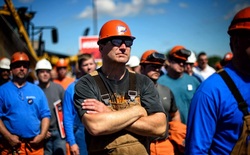 And I have my own ideas, written about 20 years ago but very relevant today... Classes and Value Systems in the United States Clearly, there are vast differences between the members of the different classes in this country. However, the US being the “land of opportunity” where we can all move wherever we please and learn whatever we choose, class is not a hereditary nor location-based division. Distinctions can't be made simply by income, either, because ministers, for example, generally make about the same income as fast-food workers and far less money than assembly-line workers, but live and vote and consume in very different ways. A class model of American culture must address the different ways of thinking and working that divide the American people, and starts with the division between abstract thinkers and concrete thinkers. In spite of all the sociological demographic measures, in truth, how people make a living is the next defining characteristic; the values on which their actions are based provides the final filter. Abstract and Concrete Thinking Consider: some people think in terms of their experiences and the things they can see, hear, touch, taste, and smell; they ask questions about objects, events, people, and procedures. Others think in terms of possibilities and principles; they ask questions that apply ideas in lots of different ways. Some people think in terms of specific how-to steps; they read the instruction book or do things they way they were told because each task is different. Others think in terms of relationships and patterns; they see how something they’ve done before is similar to what is being done now and use the same methods as far as they can—typically before reading the instructions. People in the first group are called concrete thinkers. They tend to experience the world as a series of separate, discrete objects and events, and learn by experience working with objects, or by seeing or hearing concrete examples. Once they learn how something is done, that’s the only “right” way to do it. People in the second group are called abstract thinkers. They’re constantly generalizing from events and experiences and relating or connecting them to others, and experience the world as an unfolding set of more and more complex interactions hoping to find a few basic principles that apply to everything. All humans generalize, but for abstract thinkers, it’s the only way to operate. Once they see how something has been done, they look for ways to do it better, more efficiently, more beautifully, or in a way that's simply more fun. Given the difference between these two ways of thinking, is it any wonder that the past thousand years1 have seen almost constant conflicts between, as my grandmother used to say, “Town & Gown”? The Townies, the sons of tradesmen and artisans, live by their ability to manipulate concrete objects. The Gownies, the black-robed students and instructors in the college or university (who used to wear their robes all the time but now only wear them at commencement), live by their ability to grasp and manipulate abstract ideas. Neither understands nor places much value on the other, and both feel a little defensive of their limitations. Well into the 19th century, they lived side by side, the tradesmen selling goods to the intelligencia and the intelligencia providing basic moral, religious, and ethical training to their children. This went on for generation after generation, in a usually uncomfortable dynamic tension, often divided by the walls of the university campus so the boys from the different groups wouldn't taunt and fight with each other. 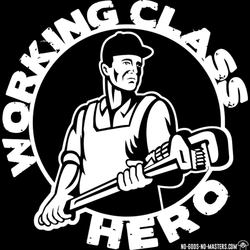 Working With Head or Hands It's not just how we think that defines (and too often divides) us; it's also what we do. In fact, for most Americans, “what do you do for a living?” is the first question we ask when we're getting to know someone. For the purposes of this model, I've divided “what we do” into 2 main classes: we either work with our hands – building, creating, fixing, moving, cleaning, or in some other way manipulating material stuff – or we work with our heads – calculating, exploring, investigating, analyzing, developing, designing, or projecting future states, of ideas and relationships. People who rely on Concrete Thinking and working with the hands have been the foundation for Industrial Culture. They are the Laborers, Marx's Proletariat, modern America's "White Working Class", “red neck,” or “Joe the Plumber”. A few are day-laborers, living on the fringes of the culture, often immigrants, consuming little and rarely saying anything in the voting place; those few are called here “T-shirts”. The vast majority, though, are the Blue (men) or Pink (women) Collar workers whose parents and grandparents were the same. They work the factories and construction sites, staff the stores and restaurants, provide the support for hospitals, hotels, schools, and churches, and keep the corporations functioning. Some of them work on farms or in the lumber, fishing, and mining industries, in daily contact with natural processes and resources. For people in these classes, the world is made up of objects to be used, manipulated, or modified to suit one's immediate life purpose. Trees, for example, are objects that may be good for shade, but not if they block a desired view or drop too many leaves or fruit in the wrong place; then they're simply objects to be eliminated. The T-shirt or Blue Collar worker will go out and, with or without the help of friends, do whatever it takes to get rid of it, perhaps cutting up a load of firewood in the process. The Shift to Management – Working With the Head When the Concrete-thinking worker begins to be seen as a leader, or comments on patterns and relationships in the work being done, a promotion to manager usually takes place. Suddenly the Blue Collar worker is a White Collar businessman. They're now the manager or owner of a plumbing, construction, or electrical company, the factory-floor supervisor who's been “moved upstairs”, or the effective sales person who's now sales manager. White Collars are also the professionals – they may be a pharmacist, optometrist, engineer, lawyer, dentist, or physician – who once would have learned their trade as apprentices and worked their way up to owning a business, or might have been trained on top of a liberal-arts education, but most of whom today have earned a technical degree and gone straight into the position - a fact which makes the professional suspect to the working-his-way-up Blue Collar. To White Collars, however the got there, an undesirable tree remains an object to be eliminated, but the White Collar will pay someone to cut it down and haul it away rather than do it himself or with the help of friends or family. Regardless of whether they rise up through the ranks or step into the position straight out of school, both Blue/Pink and White Collars have the training to do their job well. Problems arise though, because they too often lack the broader knowledge-base that can help them think about the process, its context, and its consequences, rather than simply do the work. No longer able to put in a day's work and go home, managers need to keep up with the finances and staffing, and be responsible for how others do the job, as well as taking the long view. As a result, the shift from Blue Collar to White Collar is difficult for many, and often leads to addictive behaviors as the conflict between ways of thinking takes its toll. The addictions may include alcohol, nicotine, and drugs, or may be more subtle: acquisition of possessions, unhealthy sexual behaviors, abuse of food, or even excessive exercise. And the income for White Collars being the highest in the country, the resources are usually there to support the addiction. Becoming a Power-Broker When the White Collar manager or business owner reaches a certain level of income and power, another shift takes place. Now people are asking for advice and funds outside of the business. Now there are events in the community that must be attended to maintain that level of income and power. And those events are not made up of people from either the Blue/Pink Collar class nor even mostly of other members of the White Collar class. No, this level of power and income belongs to a whole new class: people who do business during formal dinners and receptions, who attend inaugurations of mayors, governors, and presidents – and often help pay for the celebrations that follow – wearing formal attire as they do their work at these events: they are the Tuxedo class. Again, it's a difficult transition. Instead of going to an office each day to manage the production and distribution of goods and services, members of the Tuxedo class build relationships and power structures, manage their resources to maximize long-term income and stability, and support the work of creative, thoughtful people around the world. They merge abstract and concrete thinking, working almost entirely in their heads, as they focus on the long term and the largest possible scope. They are now the most powerful people in town, and often tell the politicians what to do. Possessions are, to the Tuxedo, a sign of power or a source of delight. Nothing else about an object matters to them. A tree is allowed to grow only where it best serves the landscape, or as an indication that this member of the Tuxedo class has the power to let it grow where it is. If something else is more delightful, the tree goes without a thought. People are paid; the work is done; no evidence is left. If a new tree is desirable, it's paid for and brought in. The tree, in other words, is an abstraction, only valuable as an experience of beauty or symbol of the individual's power and will - as is a forest, a lake, or a town. For the Blue Collar worker who's risen through the ranks of White Collar, the shift to Tuxedo can be painful and almost too much to handle (an was illustrated in many novels and films through the 1930s and '40s). Then there's the problem of how to raise the kids – which value system do they get trained in? How can one take advantage of the privileges of income and power without destroying their unique creative potential? (This dilemma was illustrated in those early films and novels, and more recent ones, like The Ultimate Gift (2007) with James Garner) These are the problems that plague the nouveau riche member of the Tuxedo class – and they are issues of values, ideas, and relationships, not the manipulation of objects; abstractions, not concrete objects. Focusing on Abstract Ideas and Relationships The shift in ways of thinking that's required in the progression from Blue Collar (concrete, working with hands) to White Collar (concrete, working with the head) to Tuxedo (working with the head at a large scale, using abstract concept but measured in concrete terms), is part of why it's so hard for some people to make the transition into the Tuxedo class from the working class in which they made the money that put them there (as exemplified by the shipbuilder in the film Pretty Woman) – and why their children and grandchildren, who have grown up among Tuxedos and are accustomed to that way of thinking and acting, don't really understand them. And that, in large part, is why most American Workers have no desire to be promoted to management or become the heads of companies - they just want to live their Blue Collar lives with lots of money. Another class of American workers are purely abstract thinkers. Many would be, and some call themselves, perpetual students. Some are scholars and philosophers; others are researchers and analysts, and still others are designers and artists. They refuse to wear “business attire” or uniforms or to be confined to a specific “career path” and typically wear jeans or corduroys and sweaters, so may be called the Turtleneck class. They usually begin their work life in colleges or universities, perhaps extending their degree programs to take just a few more classes and explore just a few more ideas. Some are self-taught, learning from the books and websites they study: usually a mixture of science fiction, history, biography, the encyclopedia and dictionary, and how-to manuals. Possessions mean little to Turtlenecks, unless they represent ideas that are meaningful. Production of goods and services are the furthest thing from their mind. Ideas and possibilities are what's important – whether in the past, the present, or the future. They may go on to work as analysts in a business or government, if they need the income to support their family, or as teachers or social workers or ministers if they can get by on those lower levels of pay. Increasingly, they're found in high-technology companies, where they can work in collegial settings creating interesting stuff and do well financially, too. Often they'll go back for more degrees, and work in a college or university at some point in their career. For the Turtleneck a tree is a fascinating specimen, or a source of food or delight, or a connection with previous times and places, or a link with Nature, or all of the above. If the tree drops leaves, it's seen as a demonstration of a natural process that contributes to the well-being of all. If it blocks a view, it may be modified or simply left to become the view. Only if the tree becomes diseased or too badly broken to remain or is actually impeding something really important (like a sewer or sidewalk) will the Turtleneck choose to cut it down – and then only with considerable effort to ensure that its remains will be properly disposed of. Turtleneck workers are explorers and generally work in participatory team structures, rather than top-down hierarchies. They refuse to take on the responsibility for others' work, which is the hallmark of White Collar function, and they refuse to “punch the clock” and “follow orders” which they believe to be the defining characteristics of the Blue Collar worker. Insight and creativity are honored among Turtlenecks, and completing assignments to meet a deadline is the closest they come to following a schedule. The Rise of A New Production Class In the agricultural world of the first several thousand years of Western culture, there were very clear roles for both kinds of thinking, as I described earlier as the tension between “town and gown.” Then, in the industrializing world of the late 1700s and early 1800s, concrete thinkers came into their own as powerful and important contributors to society. Men whose minds grasped the function and process of mechanics and the interrelationships of mechanical parts, and who were comfortable in a clearly defined organizational structure, became the stars of European and American culture. Those who could translate that understanding into numbers and record-keeping were the new prophets. Those who could combine the two became the new princes – merchant princes. Concrete thinkers creating and producing goods and building structures made the world an exciting place of possibility. And that's how Western culture sustained itself and expanded, well into the 1980s. Then something happened. We call it the Computer Age, the Information Age, the Age of the Internet. Suddenly, building things was not nearly as important as building the abstractions that manage things. Computer software is an abstraction, and computer software has become the way everything gets done. So, for the first time in Western culture, abstract thinking Turtlenecks began to have a significant role in the production system. The result was a revolution in how we do business – and along with it, huge resentment on the part of the concrete thinking Blue Collar and White Collar workers who find themselves totally left out of the production process – or worse, are relying on equipment they don't understand to do the work they've done without it in the past. The Babyboomer generation, the first generation in human history in which the majority of teens expected to go to college, was the turning point. And a shift from concrete thinking to abstract thinking is the intended result of a college education. The “general education” requirements – usually about four terms of coursework – survey the academic disciplines and, in the process, open the mind to see the world in terms of interrelated, overlapping, and sometimes conflicting, understandings, with no clear boundaries between “right and wrong” or “good and bad”. This, to the concrete thinker, is certainly not an acceptable way to view the world - but is essential for the abstract thinker. So thousands of Blue/Pink Collar and White Collar kids became Turtlenecks. And their parents (and later, many of their children) were not happy about the change. And, in the conservative talk shows, fundamentalist religious movements, and election of George W Bush, and then Donald Trump, they - and the new generations of concrete thinkers that followed them - made their voices heard.
And now we have a situation. The United States - and all democratic nations - are founded in abstract principles that cannot be explained in concrete terms. Yet concrete thinkers - the Blue/Pink and White Collar classes, along with some Tuxedos - currently hold the power and resent all forms of abstract thought. It will take all the ingenuity, creativity, and love that the Turtlenecks and abstract-thinking Tuxedos can muster to break through before those values are lost by the actions of those who believe they hold them most dear. |
Categories
All
The mandala image above is one that Ruth made and updates periodically.
Click on it to enlarge it. Right click on the enlarged image to copy it. Archives
May 2025
CLICK ON THE RSS feed button BELOW to have Ruth's Postings sent to your email:
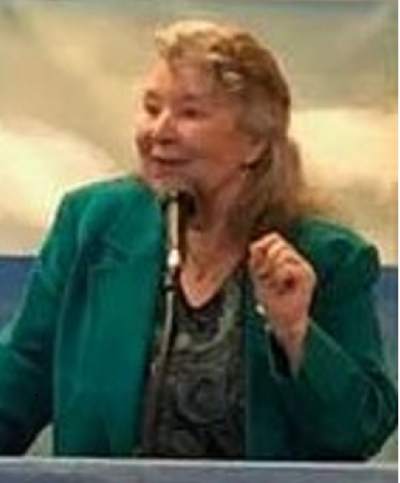
CLICK HERE to view a range of YouTube videos featuring Ruth and her teachings. CLICK HERE to view talks she's given at Portland CSL CLICK HERE to view talks she's given at Ocean Unity. And CLICK HERE to access some of the talks she's given at the Florence Unitarian Universalist Fellowship. Here's some GOOD NEWS from around the world:
|
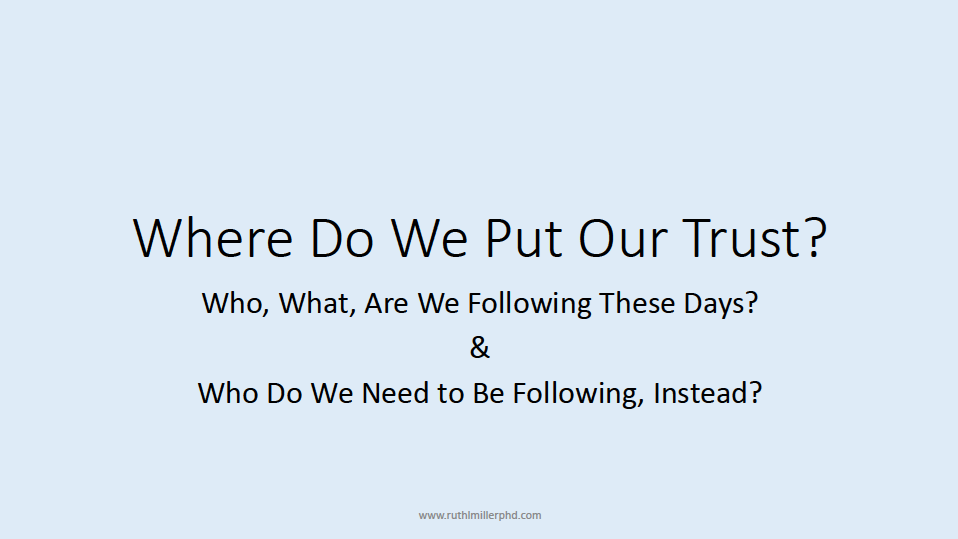

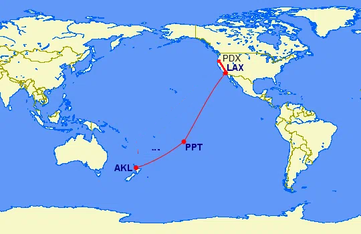
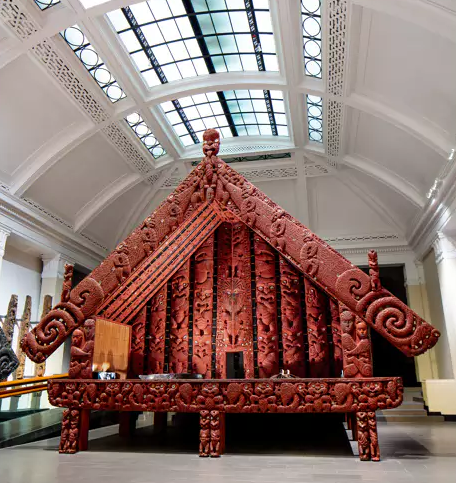
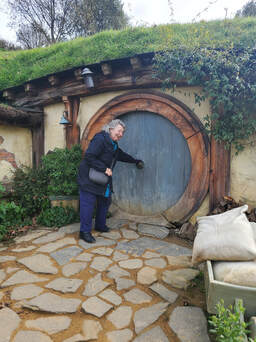
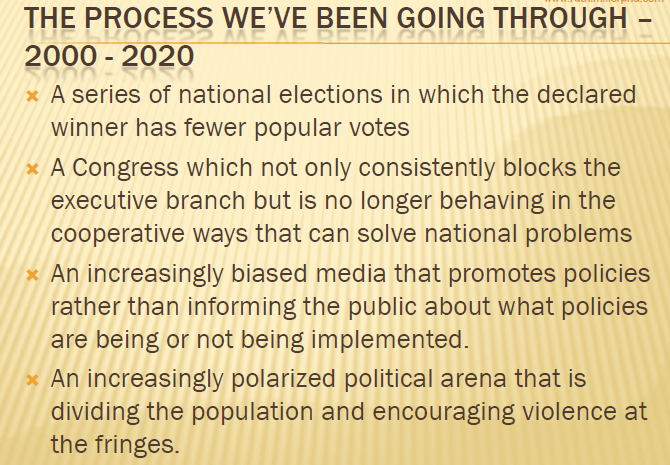
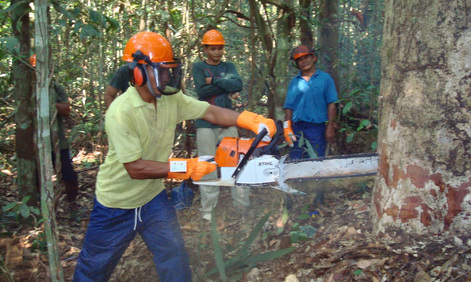

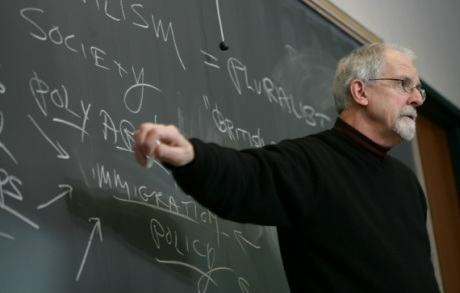


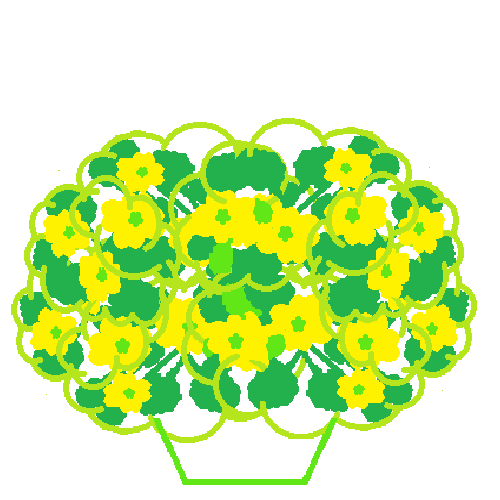
 RSS Feed
RSS Feed